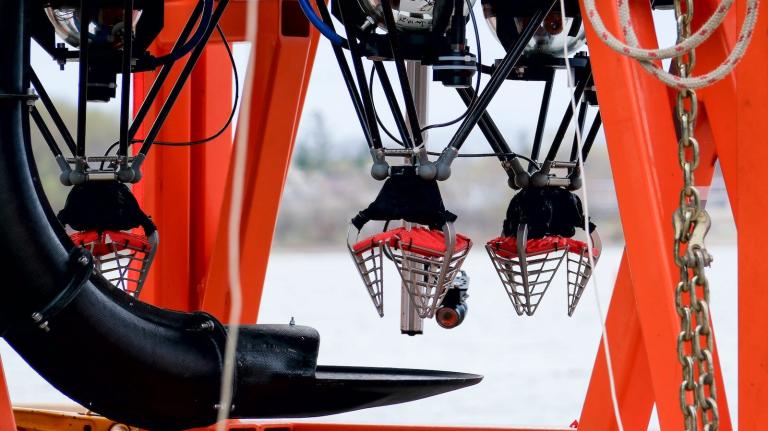The following is the fourth in a series of guest posts from the Constitutional Accountability Center, a progressive legal think tank that works on constitutional and environmental issues. It is written by online communications director Hannah McCrea and president Doug Kendall, who also help maintain CAC’s blog, Warming Law. (Part I, Part II, Part III)
—–
In previous posts, we’ve spelled out specific steps President Barack Obama can take to encourage Congress to pass legislation establishing a strong cap-and-trade program. Yet there has been speculation as to whether the President already has the authority, under the Clean Air Act, to establish a cap-and-trade program without waiting for Congress to act.
In actuality, there is no straightforward answer to whether the administration can introduce cap-and-trade for CO2 under the CAA. For one thing, the EPA has never successfully implemented a cap-and-trade program for any pollutant without congressional approval. The Bush administration tried twice, once with the Clean Air Mercury Rule (regulating mercury emissions) and again with the Clean Air Interstate Rule (regulating sulfur dioxide and nitrous oxide emissions), though both programs were ultimately struck down by the D.C. Circuit on unrelated grounds. (Note: The D.C. Circuit temporarily reinstated the Clean Air Interstate Rule in December in order to preserve its environmental benefits while the EPA promulgates new rules. However, the court made clear that it still viewed the program as unlawful.)
The only time cap-and-trade has been permitted to go forward is when it was explicitly approved in CAA provisions, as was the case with the EPA’s famous Acid Rain Program regulating SO2 and NOx. Georgetown Law professor (and newly-appointed EPA adviser) Lisa Heinzerling noted in testimony [PDF] before the House Committee on Energy and Commerce that this by itself might be grounds for prohibiting cap-and-trade for CO2 under other sections of the Act, “because [the acid rain] provisions explicitly permit emissions trading, it might be argued that the provisions that do not mention trading do not allow it.” (Emphasis added.)
Precedent thus provides little insight as to whether a full-fledged cap-and-trade program for CO2 emissions under the existing CAA would withstand a court challenge. Moreover, Heinzerling’s congressional testimony reveals that while certain provisions of the CAA lend themselves to establishing targets for CO2 emissions, the language of the Act only somewhat supports then using cap-and-trade as the mechanism for reducing total emissions. She concedes:
The regulatory provisions of the Clean Air Act appear, for the most part, not to have been written with a cap-and-trade program in mind. Developing a cap-and-trade program under these provisions would thus, at the very least, require a good bit of interpretive creativity.
Alternatively, in a widely-circulated article published in October, environmentalists Michael Northrop and David Sassoon discussed using the CAA to link up state and regional cap-and-trade programs, thereby circumventing the question of whether the EPA has the authority to establish its own national program. The EPA could establish National Ambient Air Quality Standards (NAAQS) for CO2 and then potentially set requirements for how states meet these standards through State Implementation Plans. Northrop and Sassoon explain:
It is tricky legal terrain. Many experts do not believe the EPA can establish a carbon trading mechanism on its own authority, but they agree that states can, and that the EPA can play the role of regulator.
The legality of this approach, however, would also not be known until it was attempted and (likely) litigated, a process that could take years.
All this raises a bigger question of whether President Obama should introduce cap-and-trade under the existing CAA, even if he could legally find a way. While the CAA has the obvious advantage of being readily available, attempting to establish a rushed or half-hearted cap-and-trade program under its ungainly provisions could slow down parallel congressional efforts to pass cap-and-trade, and well-tailored legislation would almost certainly provide a preferable framework for greenhouse gas mitigation. As Heinzerling put it to legislators last April, “the Clean Air Act is an excellent off-the-rack garment for greenhouse gas regulation, but it may be that congress wants a more tailored fit.”
A much wiser strategy, then, might be for President Obama to use the CAA to prod Congress on climate change, rather than do its work for it. By (1) using more established federal tools such as EPCA’s CAFE standards and CAA Section 111 new and existing source performance standards, (2) granting the waiver that will allow California and over a dozen other states to start enforcing stricter auto emission standards, and (3) encouraging local, state, and regional experimentation with stronger environmental regulations, the Obama EPA can make it increasingly untenable for Congress not to act.
As the history of environmental regulation has taught us, if such actions occur, influential industries like automakers and electric utilities will then demand that Congress provide a more organized, comprehensive approach to climate policy, especially if faced with an administration eager to use its permitting and monitoring powers to limit greenhouse gases.
In this sense, President Obama already has the tools to make industry rally behind, rather than against, a strong cap-and-trade bill — and therefore doesn’t need to try to force his sleek, modern cap-and-trade plan into the 1970s leisure suit that is the existing Clean Air Act.



